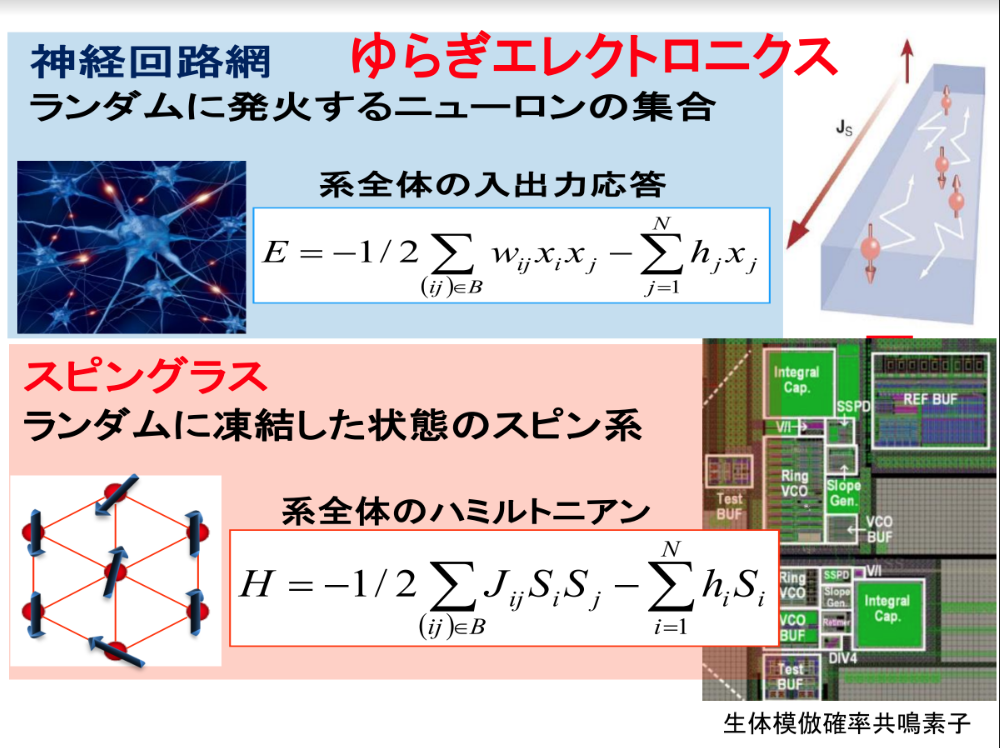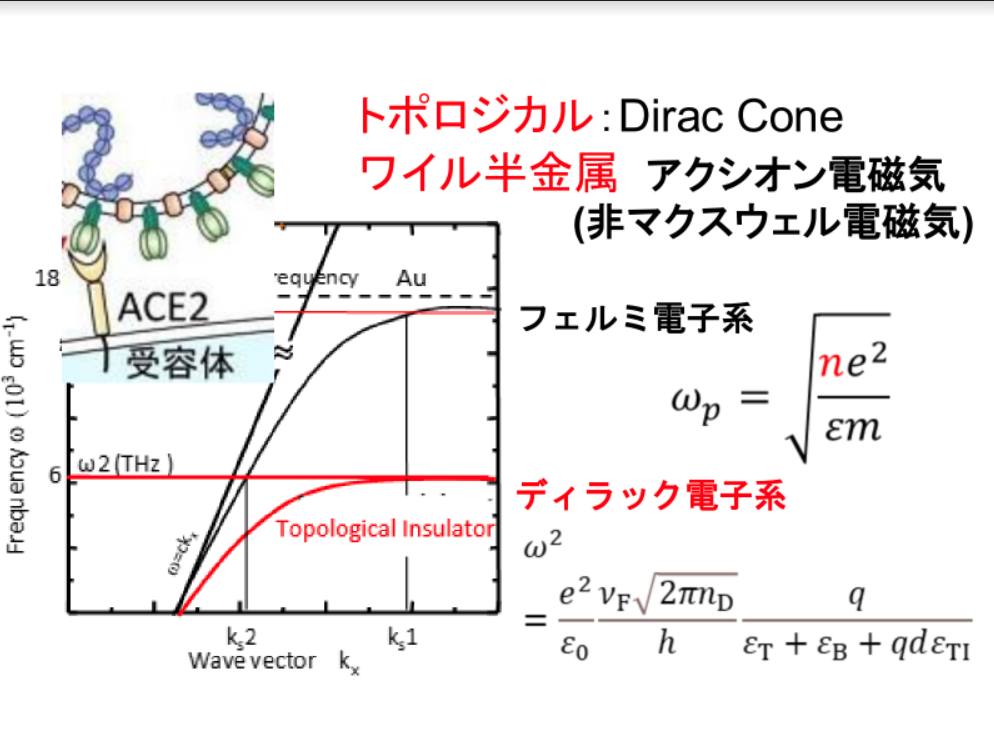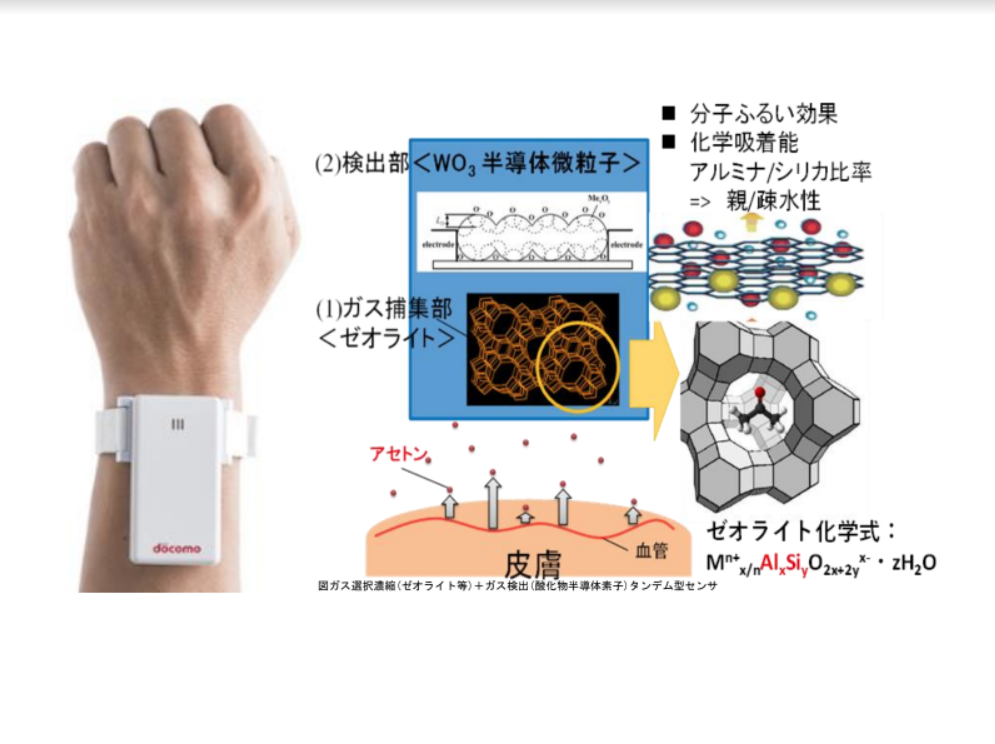
Hongo Campus
Brain-mimicking Beyond AI devices using spin waves and fluctuations and quantum technology for information processing and medical engineering applications
Research on brain-mimetic devices utilizing spin fluctuation, focusing on the spinciple that signal processing in neurons is equivalent to the Hamiltonian of a physical property called spin glass. Also, research is being conducted on applying spin wave quantum interference, resonance tunneling phenomena, and stochastic resonance principles, which can be operated at room temperature, to information processing devices to achieve low power consumption, and on ultra-sensitive measurement of bio-related information such as magnetoencephalography, magnetocardiography, and body gases.
"Fluctuation" electronics learned by life

Dirack electronic system THZ Wave Plas Monix's medical and engineering applicable

ELECTRIC NOSE -Electronic nose watching our health-
